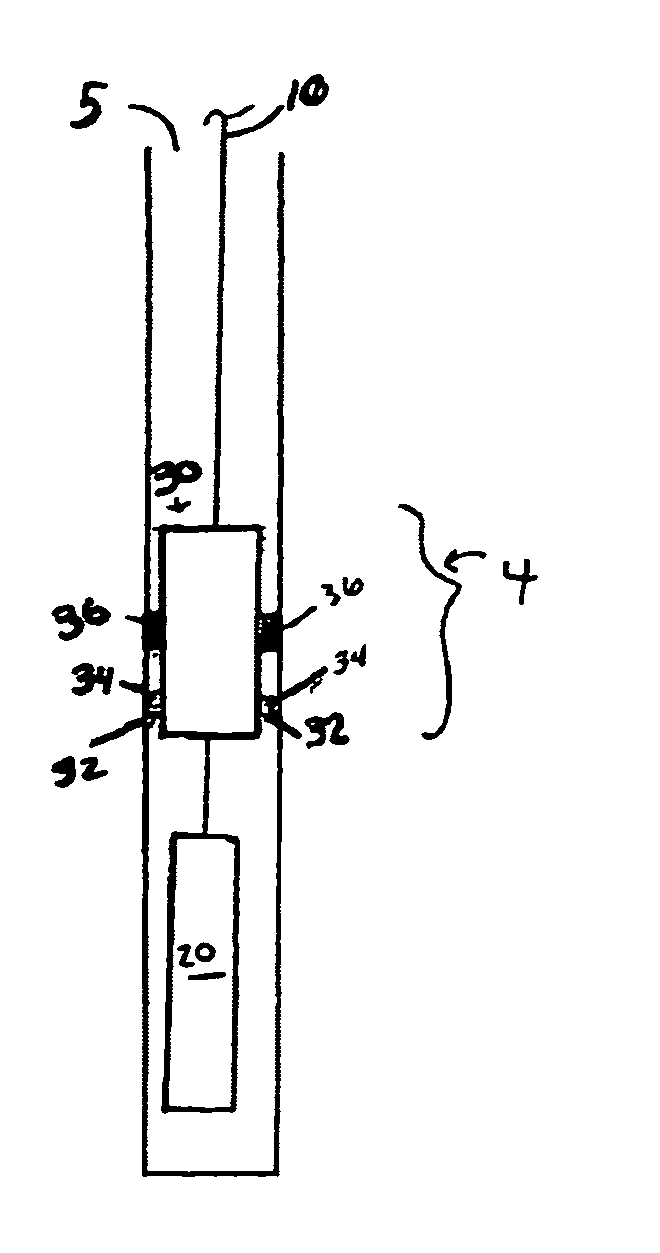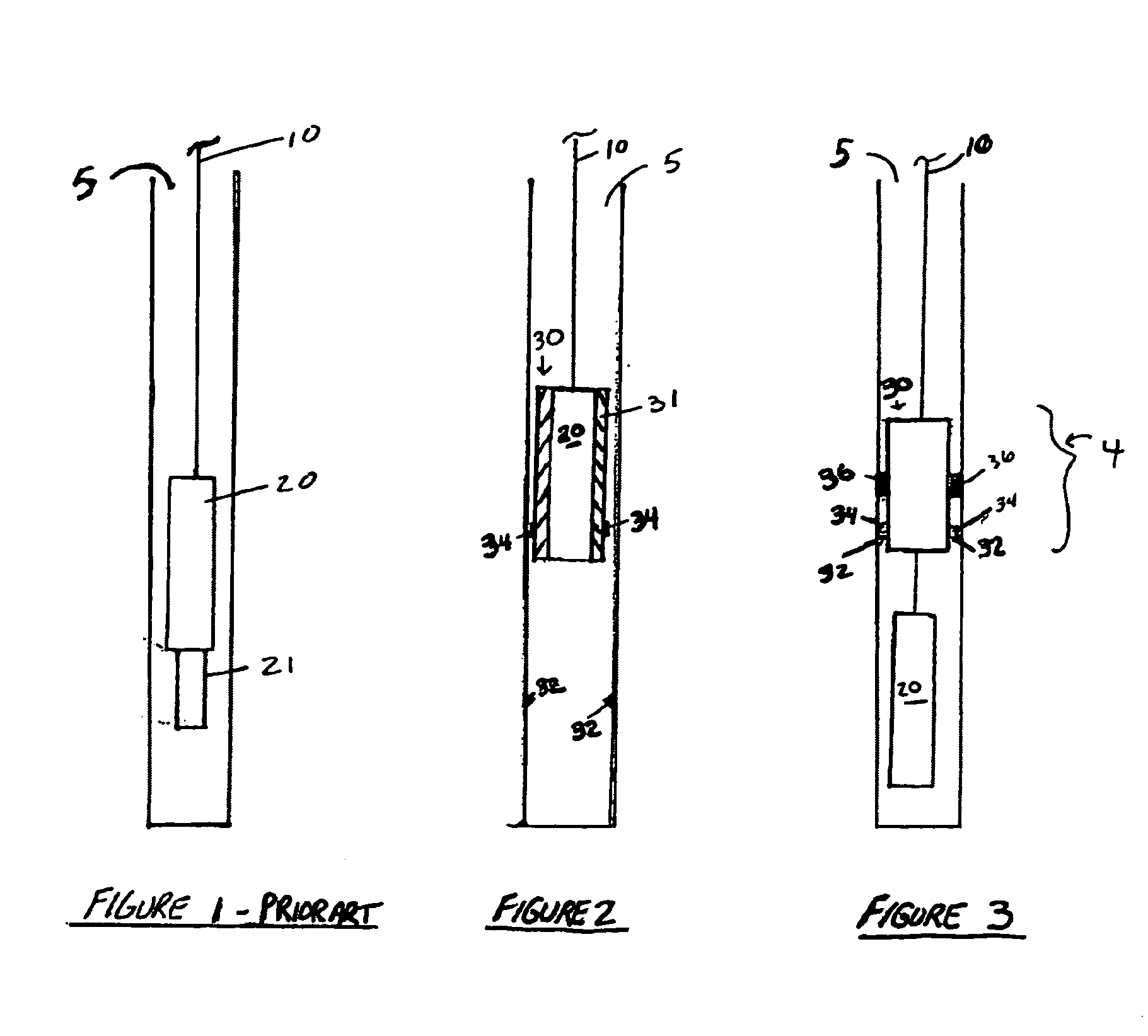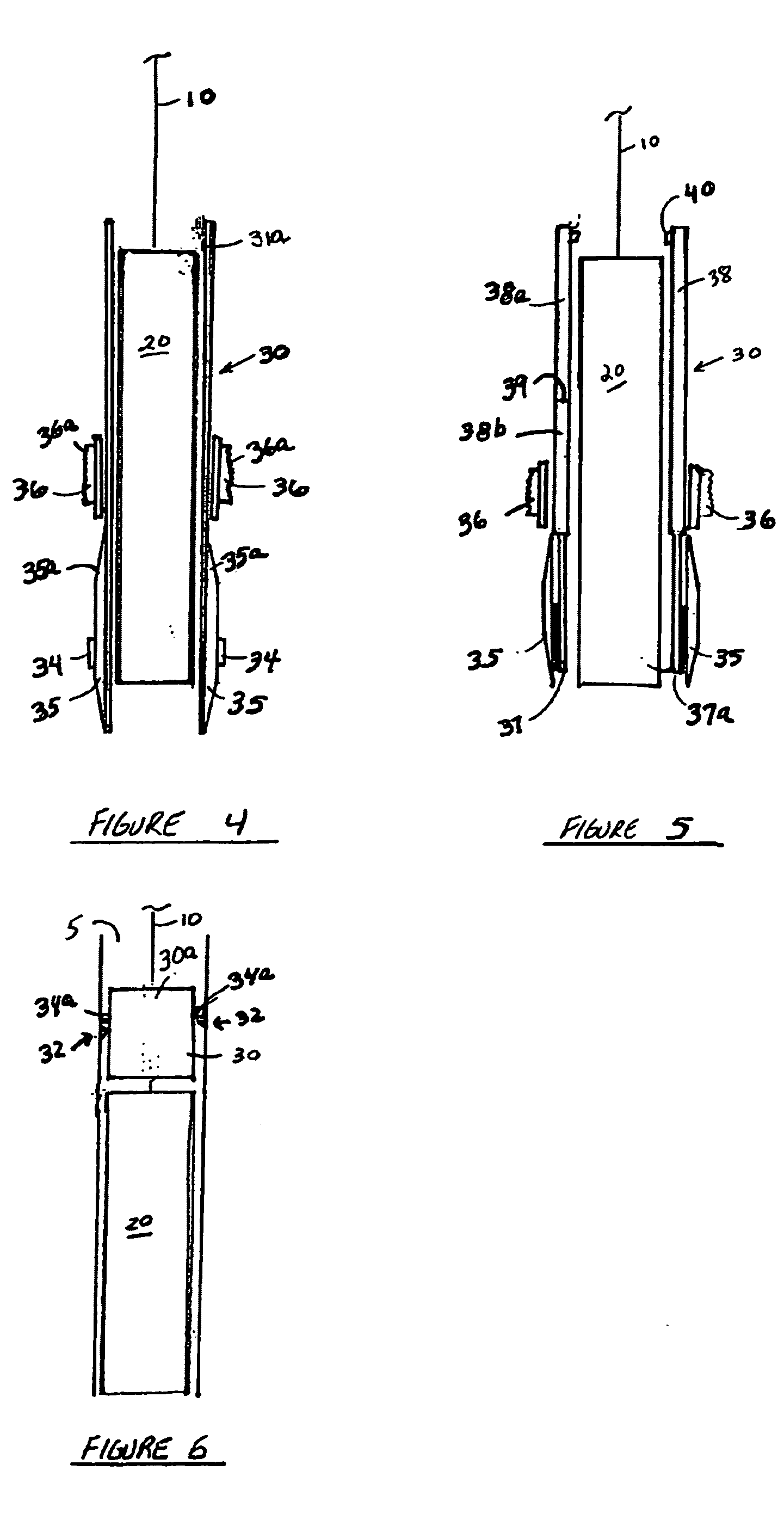However, when conveying objects by wireline, a force applied from above the wireline cannot urge the objects downhole since wireline is generally flexible and has no
compressive strength to push the objects downward into the wellbore to overcome the pressure differential.
However, use of the weight bar in conjunction with a downhole tool to overcome wellbore pressure differentials presents many problems and has many limitations.
Some of the problems with weight bars are that addition of a weight bar to a downhole tool reduces the depth at which a downhole tool can be lowered into a wellbore, weight bars cannot be used on all oilrigs due to height restrictions, and the presence of weight bars
proximate to
logging tools can diminish the accuracy of
logging data.
In situations where the downhole tool is being lowered deep into a wellbore, such as in excess of a few thousand feet, the
mass of wireline within the wellbore adds to the overall weight of what is being supported by the wireline.
While the total weight of the wireline in the wellbore has little effect on the segment of wireline
proximate to the downhole tool, the segment of wireline
proximate to the surface is greatly affected, since the tool and all associated wireline is supported by the wireline proximate to the surface.
While the strength of the wireline can be increased by using thicker wireline this does not help the weight issue since thicker wireline also has an increased
mass per unit length.
Further, thicker wireline also results in a need for more added weight since increasing the cross sectional area of the wireline increases the pressure differential across the wireline.
Space limitations are also a problem with some currently developed weight bars.
In some instances the oilrig platform at the wellbore surface has limited vertical space and cannot accommodate such a long length.
Addition of a weight bar also causes problems when using downhole tools in deviated wellbores.
When this is the case, the added loading caused by dragging the downhole tool along the borehole can take the wireline to its yield point and stretch the wireline that results in a jerky motion of the wireline tool up the wellbore instead of a smooth controlled ascent.
This is especially a problem when the downhole tool is a
well logging device because the jerking motion results in poor
logging results since the
well logging requires a steady constant ascent to obtain proper readings.
Even though many are equipped with centralizers, the
added mass of a weight bar can temporarily deform the centralizers and eccentrically position the downhole tool within the wellbore.
Downhole tools such as logging devices, perforating guns, or collar locators, may not perform their intended function if they are not centrally situated within the wellbore.
Certain dangers exist with many downhole tools that
pose hazards to the downhole tool, the personnel handling the tool, or both.
For example, production logging tools are susceptible to structural damage, especially when deployed in difficult or deviated wells.
Even when extra care is taken to protect these tools, these tools can be damaged if they strike the inner surface of the wellbore or the
production string.
Some downhole tools contain radioactive sources that are potentially harmful to the workers employing the tool, thus radioactive monitoring is necessary in order to use these types of tools.
Other downhole tools vulnerable to damage during use are perforating guns.
Perforating guns can also be mechanically damaged during
insertion into the wellbore, especially when they are in
close contact with valves at the wellbore surface such as
well control valves, master valves, swab valves, and sub-sea safety valves.
Another downhole tool that poses a risk is a chemical cutter.
Chemical cutters, while typically sealed, can still leak flammable chemicals that will combust when exposed to an ignition source.
Ignition of the chemicals from a chemical cutter at this time can likely result in serious personal injury or death.
Another
hazard to wellbore personnel is from some wells that contain hazardous chemicals within the wellbore that will contact and coat the downhole tool.
Consequently when the downhole tool is removed from the wellbore the personnel stationed at the wellbore surface are at risk of being contaminated or injured by the
hazardous substance.
 Login to View More
Login to View More  Login to View More
Login to View More 









